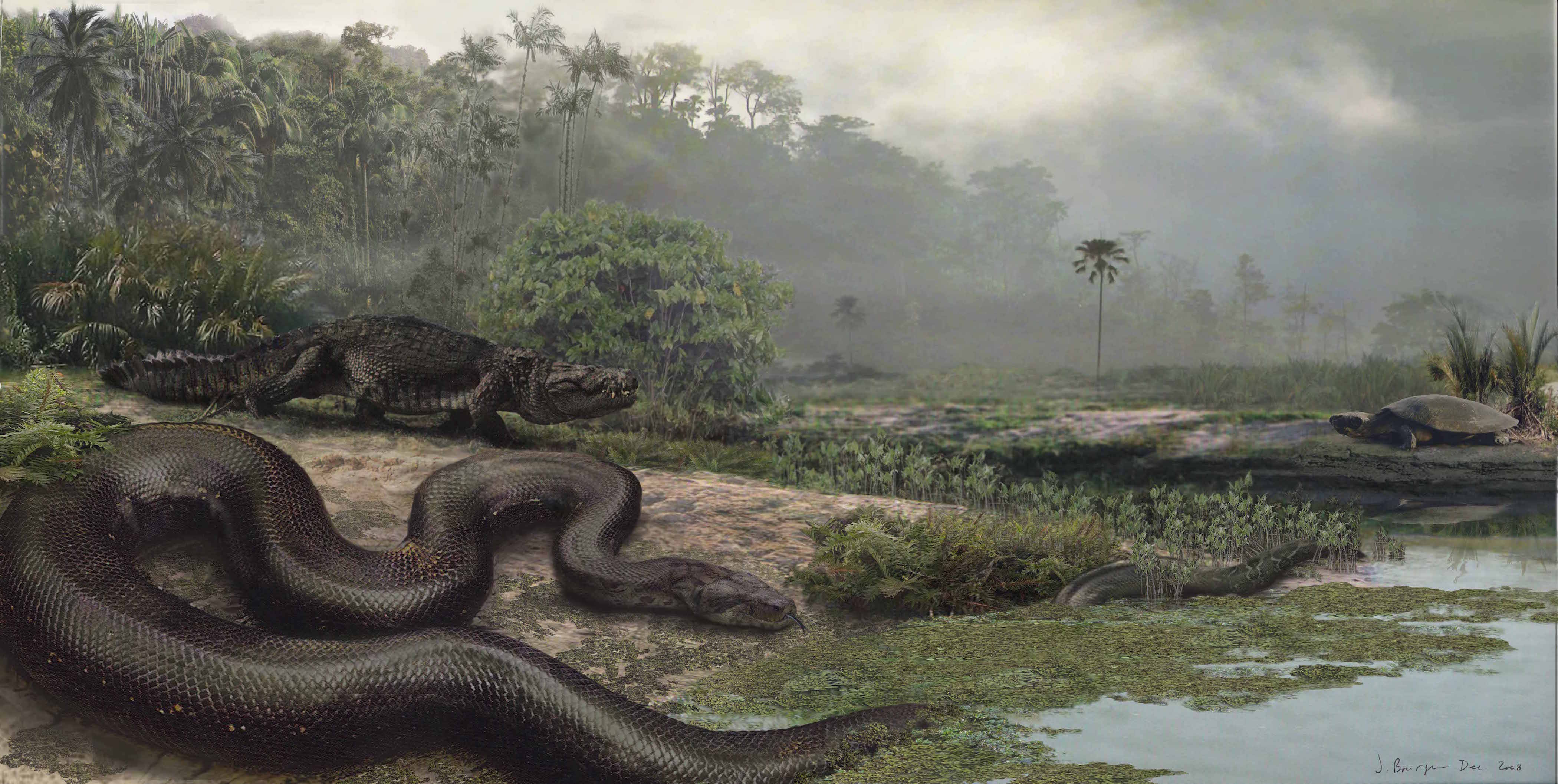Largest snake in history to open at Idaho Museum of Natural History
March 9, 2016

POCATELLO — Slithering in at 48 feet long and weighing an estimated 1.5 tons, a realistic replica of Titanoboa, the world’s largest snake, will open at the Idaho Museum of Natural History (IMNH) at Idaho State University March 19.
On March 19, the IMNH will host family friendly activities from 10 a.m. to 2 p.m. to coincide with the opening of the new exhibit “Titanoboa: Monster Snake,” a Smithsonian Traveling Exhibition Service exhibit. Activities will include bubble snakes, snake mobiles, sleeping bag snake races and cold blooded activities. Activities are free in the museum’s Discovery Room, while Titanoboa can be seen in the gallery with payment of admission.
Titanoboa lived 60 million years ago, in the era after the mass extinction of the dinosaurs. This monster snake, related to modern boa constrictors, thrived in the hot South American tropical climate. Titanoboa was longer than a bus, ate crocodiles for breakfast and would make modern anacondas look like garter snakes.
The traveling exhibit includes the monster snake replica and two vertebrae casts made from the original fossils: a 17-foot-long modern green anaconda and the vertebra from Titanoboa. Videos produced by the Smithsonian Channel tell the story of this amazing scientific discovery. The exhibition is a collaboration between the Florida Museum of Natural History, the University of Nebraska, and the Smithsonian Tropical Research Institute.
The exhibit will also include 3-D animation of Titanoboa created by the Idaho Virtualization Lab (IVL). In addition, guests will get the opportunity to handle a 3-D printed Titanoboa backbone and compare it to the backbone of a Green anaconda, the heaviest snake species alive today. These interactives were created to enhance the experience of our patrons.
The IMNH is open six days a week, closed on Mondays. The museum offers tours and activities for K-12 schools, boy and girl scouts, daycares, home school students and birthday parties. If interested in scheduling a field trip, contact the IMNH education office at 208-282-2195 or hansreb3@isu.edu.
For more information about the IMNH, visit imnh.isu.edu or call 208-282-3168.
Image Caption:
Fossil plants and animals found at the site reveal the earliest known rainforest, teeming with life and dating to the Paleocene, the lost world that followed the demise of the dinosaurs, 60 million years ago. Illustration by Jason Bourque, Florida Museum of Natural History
Categories:

